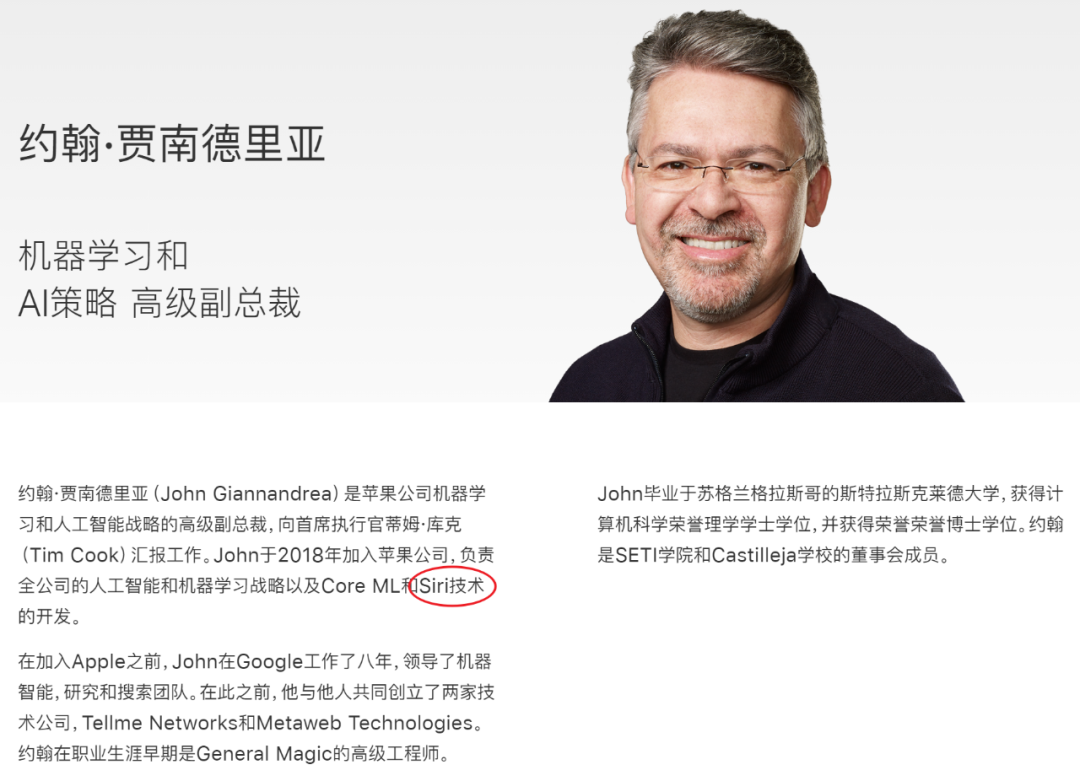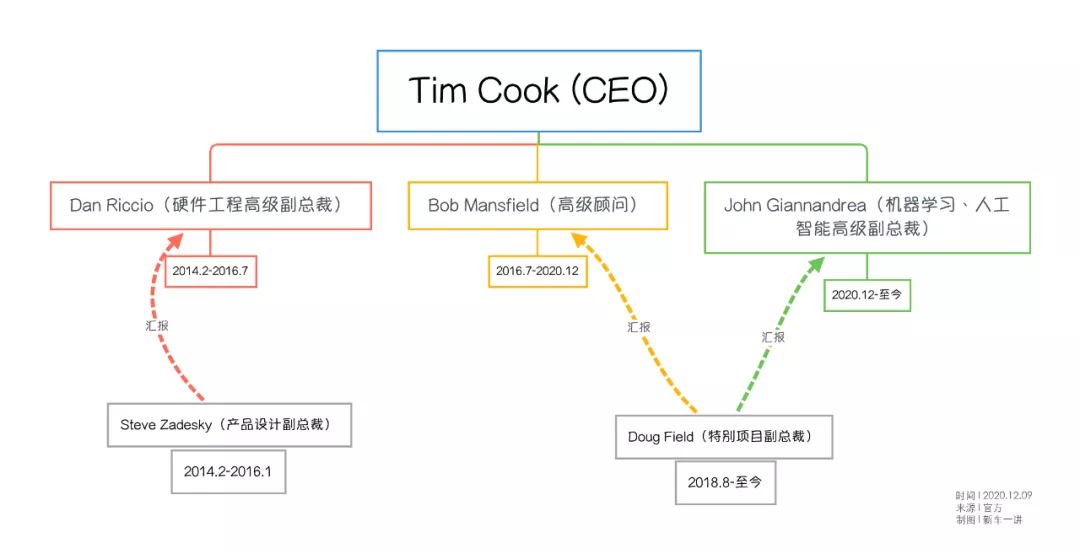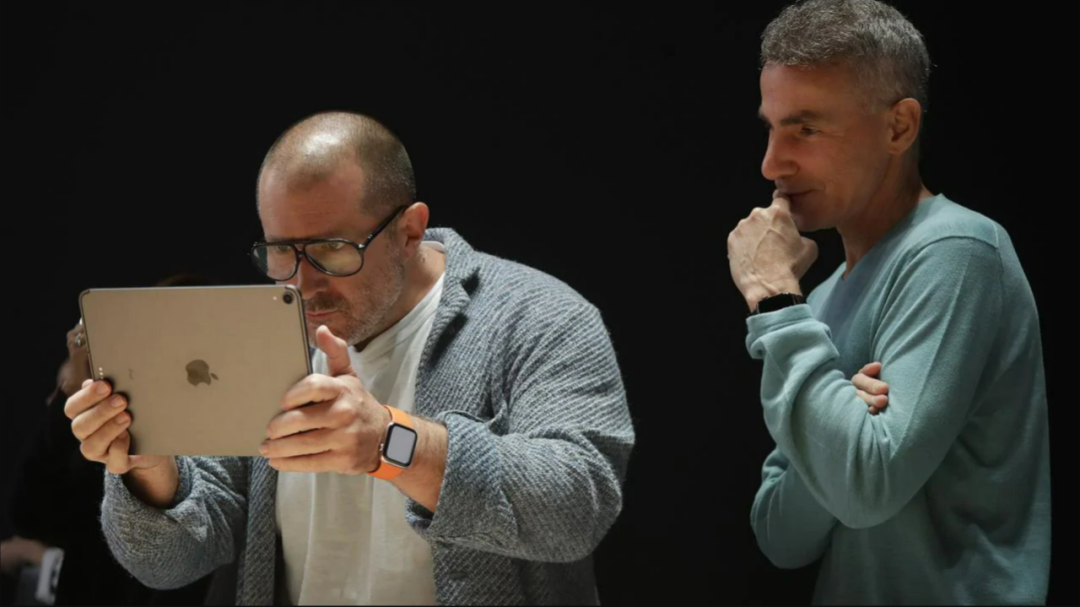*Author: Chris Zheng
-
“Hey Siri! Brakes!”
-
“I’m sorry, I don’t understand. Tip: Want to know what I can do? Just ask ‘what can you do?’ or say ‘help me’.”
-
“I found some web pages about brakes. Take a look: – – -“
-
“Okay, playing Migos’ Bricks on your AirPods Max.”

This is a joke from netizens since John Giannandrea, the head of Apple’s intelligent voice assistant department, took over Apple’s self-driving car project Project Titan (hereinafter referred to as “Titan”).
On December 8th, Bloomberg reported that Bob Mansfield, the head of Apple’s self-driving car project Titan, retired for a second time, and the Titan team began to report to John Giannandrea, Apple’s Senior Vice President of Machine Learning and AI Strategy. According to Apple’s official website, John is responsible for developing Core ML and Siri technology at Apple.

From 2014 to 2020, the Apple Titan project has undergone several changes in leadership and direction.
Now, Titan has a new leader. Will John bring surprises to the auto industry this time?
Three Heads and Two Vice Presidents
Perhaps due to the influence of Tesla while being located in Silicon Valley, Apple’s Titan project started earlier than most of the newly established car companies in China.

The Wall Street Journal first reported that Apple CEO Tim Cook approved the Titan project in approximately February 2014. The project was led by Steve Zadesky, who had worked at Apple for 16 years and was then Product Design Vice President. It aimed to develop self-driving electric cars. Steve reported directly to Dan Riccio, Apple’s Senior Vice President of Hardware Engineering, who is one of Apple’s core management team.
Steve led the development of prototypes for iPod and iPhone, and as previously expected, Apple’s car project would be his last great endeavor. However, even Steve himself could not have foreseen that the Titan project would not make much progress to be shared with the public even after his retirement.
In January 2016, Titan underwent its first major overhaul. Steve informed his Titan team colleagues that he would be leaving Apple. Some unnamed employees revealed that Apple was still a few years away from developing a “truly differentiated electric car”. Due to the lack of clear goals, the Titan project faced some challenges internally.
As it turned out, the above statements made by the employees were true. Even until July 2016, Apple failed to find Steve’s successor. Nevertheless, the company brought back Bob Mansfield, a former Apple senior vice president of technology during the Jobs era.

Bob Mansfield’s career at Apple is legendary. In June 2012, Apple announced Bob’s retirement, but he was called back to take on the role of senior vice president of technology for a “special project” in August, reporting directly to CEO Tim Cook.
In July 2013, Bob was removed from the company’s management page on the website. Apple stated that Bob was no longer a member of its executive team, but he would continue to lead the development of the “special project”.
Later, 9to5Mac reported that the “special project” Bob was working on was actually Apple’s next product, the Apple Watch. Bob was essentially Apple’s Chief Hardware Engineer, responsible for the development of Apple’s wearable technology.
By July 2016, the first generation of Apple Watch had already been launched and was hugely successful. Bob took over the “hot potato” from Dan Riccio, who was the head of the first Apple self-driving car. He officially led the development of the Titan project.
All senior managers in the Titan department started reporting to Bob, and Apple’s Chief Design Officer, Jony Ive, occasionally joined in.
Bob led the first strategic adjustment of the Titan project: from developing an integrated automatic driving electric car to researching and developing an automatic driving software system. At the same time, the time for Apple’s car to enter mass production was adjusted from 2020 to 2021.Some hardware engineers from car companies or suppliers in Detroit (the automotive capital of the US), including brake and suspension engineers, have left to join various self-driving car companies in Silicon Valley.
In August 2018, Tesla Model 3 chief engineer Doug Field finally filled Steve’s vacancy and became Apple’s Vice President of the Titan project, overseeing the development of the Titan car and reporting to Bob.
Doug was once Tesla’s only senior vice president, responsible for vehicle engineering and manufacturing for the Model 3. Elon Musk said he was one of the world’s most talented engineering execs.
Doug’s leadership of Titan itself has meant that Apple has renewed its interest in vehicle engineering, and a new round of adjustments to Apple’s car strategy is inevitable.
In April and July 2019, two Tesla engineering vice presidents, Michael Schwekutsch and Steve MacManus, joined Titan. Michael and Steve were responsible for the powertrain of Tesla Roadster 2/Semi Truck/Cybertruck and the layout of harnesses and seats of the vehicle interior engineering, respectively.
At this point, Apple’s software-hardware integrated car-building strategy is already a done deal.
Under Doug’s leadership, Apple also laid off over 200 Titan project employees in January 2019.
Several strategic swings have resulted in continuous delays in the project. According to famous Apple analyst Ming-Chi Kuo, Apple’s car production time has been pushed back to 2023 to 2025.
Bob, who has long been in charge, is now retired for the second time, and Titan has welcomed its third leader, John Giannandrea.
John joined Apple in 2018 and was subsequently promoted to senior vice president and entered Apple’s core management team, overseeing Apple’s machine learning and AI strategy. Prior to that, John worked for Google for eight years, leading Google’s machine intelligence, R&D, and search teams.
Will the Titan project undergo another change with a management team that has no hardware background?
“Tesla’s Graveyard”From various companies in the automobile industry chain such as Tesla, Mercedes-Benz, Ford, Samsung, and QNX, Apple’s Titan project has been continuously hunting for talents in the past few years, which has had the most iconic impact on the industry.
Automotive tech companies in Silicon Valley have been hit hard, especially Tesla.
Since October 2014, the first batch of Tesla talents began to be “subdued” by Titan recruiters: Tesla Engineering Vice President Chris Porritt, Engineering Manager David Nelson, Powertrain Senior Engineer John Ireland, and Autopilot Firmware Engineer Jaime Carlson successively joined the Titan project.
Subsequently, similar publicly legal hunting intensified, and the plot reached its climax in August 2018. During the period when Model 3 was deeply mired in production hell, Apple poached Doug Field, the chief engineer of Model 3 responsible for production ramp-up and Tesla’s senior engineering vice president.
According to CNBC, citing LinkedIn, in the first eight months of 2018, Apple’s Titan project HR poached at least 46 former Tesla employees, including Autopilot, quality assurance, powertrain, mechanical design, and firmware engineers, as well as several global supply chain managers.
A Tesla engineer who declined to be named revealed that for engineers with similar capabilities in technology, software, and manufacturing, Apple’s compensation can reach twice that of Tesla’s.
A Tesla spokesperson responded to Apple’s continuous poaching:
“We wish them all the best. People who choose Tesla have chosen a more difficult path.”
“Our cash balance is 1% of Apple’s, so they can certainly afford to pay a lot more than we can. We’re in the extremely difficult position of competing against massive, entrenched competitors, many of which are state-sponsored, so we appreciate any support Tesla can get.”
“Despite this, we believe our mission is worth the sacrifice of time and the negative attacks by those who misinterpret our goals. There are many companies that make electric cars, and many of them are doing good things, but we are convinced that Tesla’s methods will accelerate sustainable energy development. Time is precious, and we’re grateful for the support of everyone who believes in Tesla’s mission.”
In fact, outside of the Tesla spokesperson, Tesla CEO Elon Musk had already published a more “roguish” version in 2015:
“They’ve hired people we’ve fired. We always jokingly call Apple the ‘Tesla Graveyard.’ If you don’t make it at Tesla, you go work at Apple.”Actually, Tesla has become a company less affected by Apple’s talent black hole effect.
Mission Motors, a Silicon Valley electric motorcycle startup, announced its cessation of operations shortly after Apple hired six of its top engineers. Mission Motors CEO Derek Kaufman stated that “We had some of the same top engineers that Apple hired. It needs them more than we do, so it took them.”
At the same time, Apple also poached five core employees from A123 Systems, a battery startup, including their CTO and battery material scientists, leading to a lawsuit against Apple by A123.
(In March 2013, A123 filed for bankruptcy protection due to unsustainable debt and was later acquired by Chinese automotive component supplier Wanxiang Group, renamed B456.)
The automotive industry is a typical multi-disciplinary, high-tech industry. From these cases, it can be seen that Apple has put in tremendous effort to recruit talent for the Titan project.
An interesting perspective is that the CEOs of the only four smart electric vehicle concept stocks currently available, Tesla, NIO, Li Auto, and XPeng, Elon Musk, Li Bin, Li Xiang, and He XPeng, have all expressed attitudes that Apple may or will enter the automotive market and that Apple’s car should not be underestimated.
Over the past six years, Apple has invested enormous human and financial resources to independently advance and deploy research and development for the Titan project outside of the public company system.
But due to senior management’s indecisiveness, Apple partially wasted the most valuable asset in competition: time.
On December 8, 2020, Apple’s Titan project entered a new era. Will the “big show” really be “yet to come”?
This article is a translation by ChatGPT of a Chinese report from 42HOW. If you have any questions about it, please email bd@42how.com.
